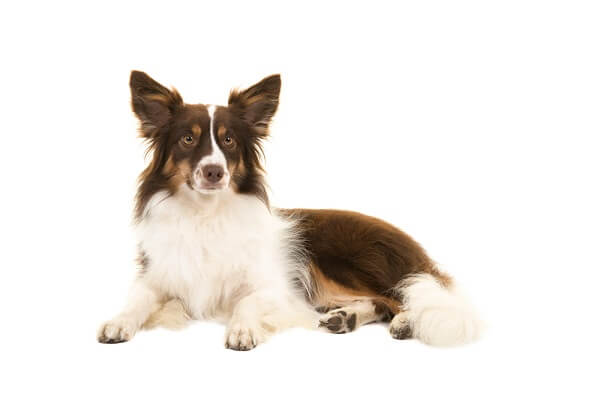
The Miniature American Shepherd is a small-to-medium-sized breed first recognized in California during the 1960s as a smaller version of the Australian Shepherd. This breed is very active, intelligent, and despite its small size is still an excellent herding dog. Like its larger relatives, the Miniature American Shepherd comes in a variety of colors ranging from black to blue merle to red. Interestingly, the history of the Miniature American Shepherd is closely related to the Australian Shepherd. In fact, a common ancestor of both breeds likely originated somewhere in France or Spain. The breed made a quick stop in Australia, then made it’s way to California. As the breed got smaller, the Miniature Australian Shepherd eventually became the Miniature American Shepherd in California. The breed was officially recognized by the American Kennel Club in 2011. Like its bigger cousin – the Australian Shepherd – the Miniature American Shepherd is an extremely loyal and intelligent herd dog. While herding was the main reason shepherds were bred, shepherd breeds are very smart and can adapt to learn a large variety of tasks, from home protection to tracking game animals. Most dogs in this breed have an energetic personality and make for very loyal companion animals. Miniature American Shepherds need a lot of activity! If you are planning on getting a puppy of this breed, make sure that you have a place to play fetch, time for walks to the dog park, and plenty of mind-stimulating games. Miniature American Shepherds are awesome dogs that are highly trainable and make great companions. However, did you know that the Miniature American Shepherd can actively teach us about biology? Let’s check out a few important biology concepts with the help of this breed! Many dogs in this breed have a particular coat coloration known as “merle.” Specifically, merle is any coat pattern with mottled patches of red, brown, or black with various shades present. “Blue merle” is also fairly common among Australian shepherds and this breed, and typically includes some grey and brown patches. The merle pattern is controlled by a gene that displays incomplete dominance. The gene itself controls the production of pigment in the coat, with the dominant version leading to an inability to produce pigment. Since every dog gets two alleles for this gene, some very interesting things can happen. Dogs that are homozygous for the recessive allele will have a solid-colored coat because all of their cells are able to produce pigment molecules. Thus, they will typically have brown eyes and a brown to black coat. However, puppies with 1 recessive allele and 1 dominant allele will have a merle coat. Since the dominant allele shows incomplete dominance, it will only be activated in some parts of the skin and body. This is what leads to the beautiful coloration of a merle coat. However, dogs that receive 2 dominant alleles at the merle gene may have significant health problems. These dogs have 0 functional genes, leading to problems during eye and ear development that can leave a puppy blind or deaf. Generally, two merle dogs should not be bred together because this leads to a very high chance that the offspring will have significant health issues. Herding dogs like the Miniature American Shepherd allow shepherds to control vast flocks of sheep or herds of cattle. But, this behavior did not simply originate out of thin air. Like many behaviors we have trained dogs to do, herding behaviors are directly related to behaviors that wolf packs have developed to hunt. To bring down large game animals, wolves have to work together as a pack and wear down large animals. To separate one from the herd, wolves will nip at the heals of their prey to drive them in a particular direction. Eventually, the entire pack can surround the separated animal and take it down. During the hunt, wolves use a variety of calls and signals to coordinate their efforts as a team. Shepherds use this basic hunting behavior to train their dogs. Most shepherds use a well-trained adult dog to help train the next generation of puppies, who quickly learn the signals and sounds necessary to coordinate their direction. Heelers and Shepherd dogs will bark and nip at the herd to drive the animals in the direction that the Shepherd wants the herd to go. However, instead of killing and eating the animals, the dogs are rewarded with a treat and praise when they do a good job!
Kingdom
Animalia
Phylum
Chordata
Class
Mammalia
Order
Carnivora
Family
Canidae
Genus
Canis
Species
Canis familiaris
Niche
Domesticated
Height
13-18 in (33-45 cm)
Weight
20-40 lbs (9-18 kg)
Lifespan
12-15 years
Social Structure
Domesticated
Conservation Status
Least Concern
Preferred Habitat
Domestic, prefers herding activities
Average Litter Size
2-6 puppies
Main Prey Species
Dog Food
Predators
Few Predators
The Basics

Fun Facts about the Miniature American Shepherd!
Merle Coloration – Patchy Spots

Herd Like You Hunt

